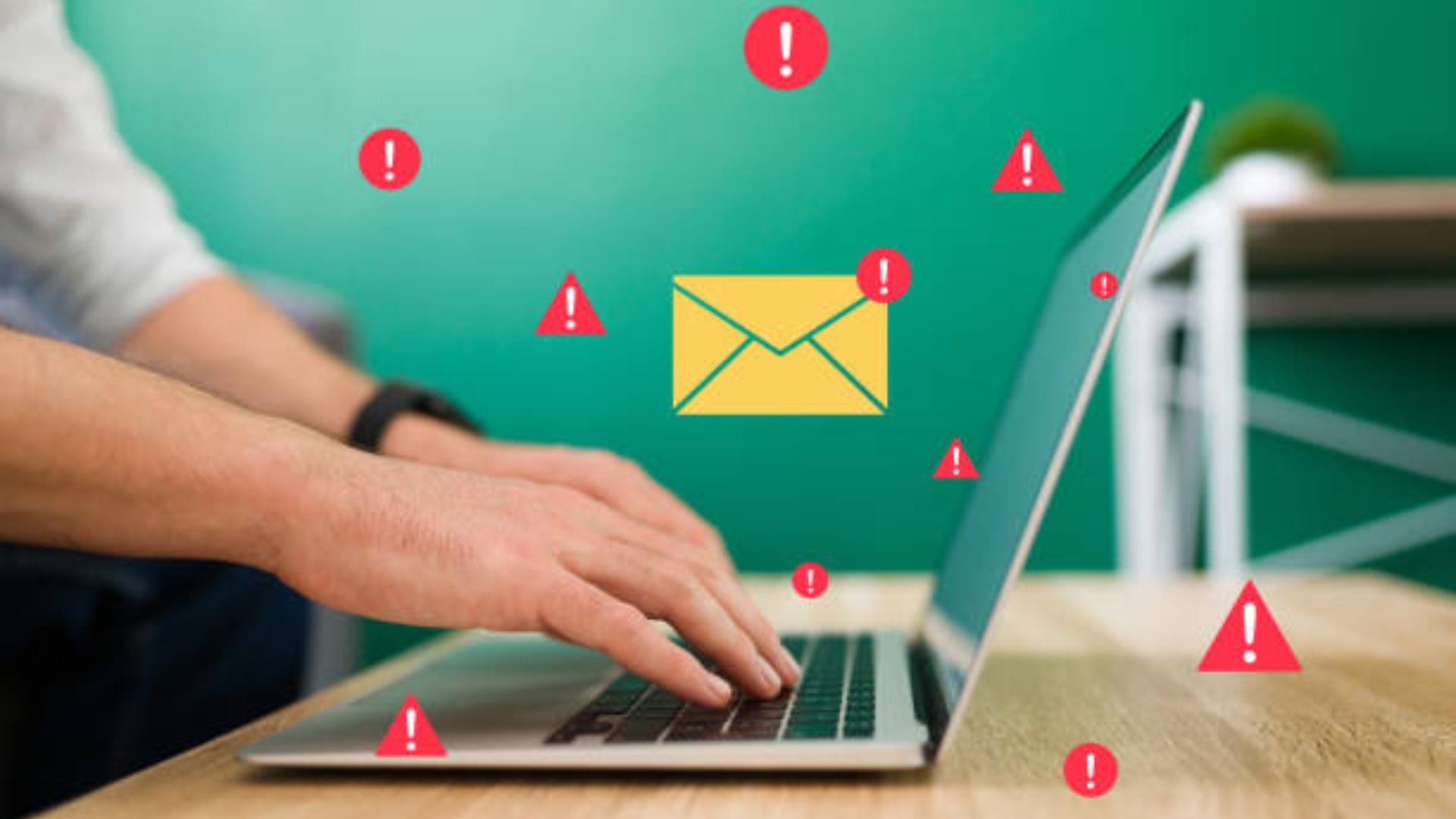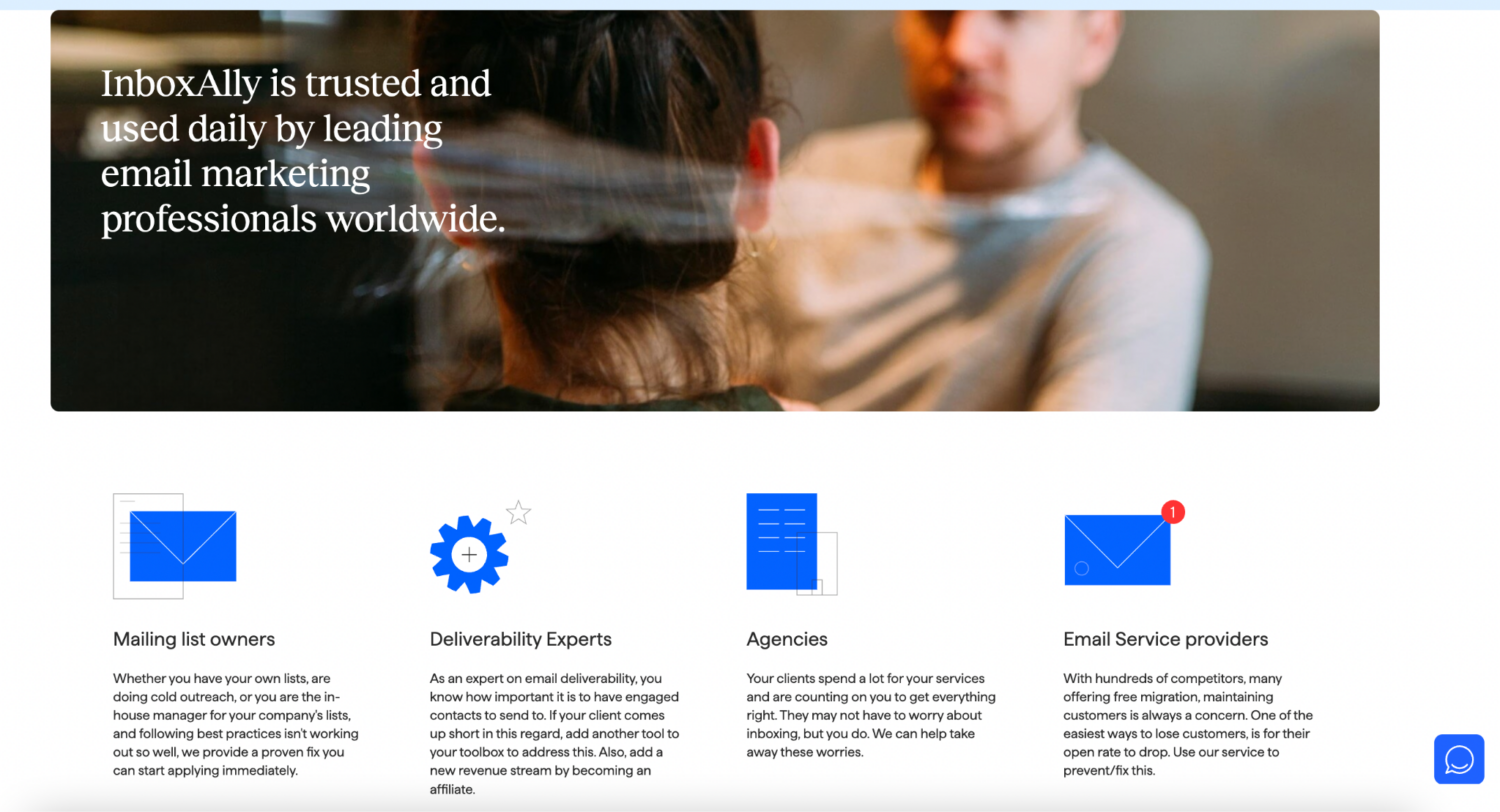When it comes to cold email campaigns, ensuring that your emails reach your intended recipients’ inboxes is essential for success. High bounce rates can hinder your outreach efforts and impact your sender’s reputation score. So, in this guide, we will provide you with practical strategies to reduce cold email bounce rate.
This guide will also ensure your messages are delivered effectively, increasing the chances of engaging your target audience. By implementing these straightforward techniques, you can enhance your email deliverability and optimize the outcomes of your cold emails.
Let’s get started!
What is an Email Bounce Rate?
An email bounce rate is a vital metric in email marketing. It refers to the percentage of emails from a campaign or a sender that couldn’t be successfully delivered to the recipient’s inbox.
When you send an email, your email service provider collaborates with the recipient’s provider to ensure successful delivery. If an email can’t be delivered, it “bounces” back to you, revealing potential issues like fake email addresses, full inboxes, or spam filters.
Moreover, high bounce rates can impact your email deliverability and reputation, affecting your overall email marketing strategy. To ensure your emails land in the right inbox and your communication is effective, being a legitimate sender and maintaining clean email addresses are crucial.
Additionally, actively working to reduce your email bounce rate is essential for successful email outreach. Doing so not only optimizes your email marketing efforts but also helps you establish a strong sender reputation in ESPs and recipients.
Soft Bounce vs Hard Bounce: The Difference
In email marketing, understanding the distinction between soft and hard bounce is essential to enhance email deliverability and reduce bounce rate.
When an email doesn’t reach its intended recipient, it’s categorized as a bounce, indicating a delivery issue.
A soft bounce occurs when the email successfully reaches the recipient’s server but cannot be delivered to the inbox. Some reasons include a full inbox or temporary server issues.
Meanwhile, a hard bounce signifies a permanent failure in email delivery due to invalid or non-existent email addresses. It’s also often caused by typos, inactive domains, or rejection by the recipient’s server.
Soft bounces might be retrievable. However, hard bounces require corrective actions to maintain email marketing effectiveness.
Read also: Email Soft Bounce vs Email Hard Bounce – What’s the Difference?
How Is Email Bounce Rate Calculated?
The email bounce rate is a vital metric to measure the effectiveness of your campaigns and the quality of your email addresses. You can calculate this rate by dividing the number of bounced emails by the total number of emails sent and then multiplying by 100.
For example, if you send out 1,000 emails and 50 of them bounce, your email bounce rate would be calculated as (50 / 1000) * 100 = 5%.
What Makes a Good Bounce Rate?
A 2% or less bounce rate is considered favorable in email marketing. If you send out 100 emails and encounter two or fewer bounces, your performance is satisfactory. [1]
However, the definition of a reasonable bounce rate can vary depending on factors such as the type of emails you send and the quality of your email addresses. Therefore, maintaining a clean email list, using double opt-in procedures, and having your own custom domain can all contribute to achieving a good bounce rate.
Reduce Cold Email Bounce Rate [18 Ways]
1. Update and Clean Your Email List Regularly
Maintaining a consistent list cleaning routine every six months is crucial for effective email marketing. High bounce rates negatively impact deliverability and can land your emails in the spam folder. [2]
As your subscriber base evolves, email addresses change, become inactive, or even turn into spam traps. This accumulation of invalid or uninterested addresses can also significantly impact your email bounce rate, deliverability, and email sender reputation.
However, regular list cleaning identifies and removes outdated, invalid, or dormant email addresses. This reduces the risk of email bounces and ensures your messages reach genuine recipients.
Moreover, it helps you conform to the expectations of email service providers, who prioritize senders with genuine lists. It also prevents hard bounces due to invalid or non-existent email addresses.
A bi-annual cleaning routine also allows you to adapt to changes in the industry, adopt new email marketing strategies, and refine your targeting efforts.
By periodically removing your list of unresponsive subscribers, you optimize your campaigns for higher engagement, click-through rates, and, ultimately, better results.
2. Avoid Sending Emails That Look Like Spam

A spam trigger is one of the main reasons why emails bounce. Sending emails containing spammy content can result in email bounces, negatively affecting your email marketing efforts.
Spam filters protect recipients from unwanted or potentially harmful emails. When your messages end up in spam folders, they often go unnoticed by your intended audience.
To prevent this, ensure that your emails are free of common triggers for spam filters. These include excessive use of certain keywords, misleading subject lines, or attachments that may be flagged as suspicious.
3. Be Consistent in Sending Emails
When subscribers expect your emails at certain intervals, they are less likely to mark them as spam or unsubscribe due to unexpected or irregular communication.
To do this, set a clear schedule for sending emails, whether weekly, bi-weekly, or monthly, and stick to it. This consistency establishes trust and familiarity with your audience.
Additionally, regular engagement keeps your email list up-to-date and engaged, reducing the chances of emails bouncing.
4. Verify Your Email Domain
Email service providers and recipient mail servers use domain-based message authentication systems to determine the legitimacy of emails. So, ensure you implement DomainKeys Identified Mail (DKIM) and Sender Policy Framework (SPF) authentication protocols for your domain.
These protocols establish your domain’s credibility. They also reduce the chances of your emails being marked as spam and prevent unauthorized use of your custom domain.
Verifying your email domain also improves your email deliverability by building trust with the recipient mail server. By taking this proactive step, you demonstrate that your emails originate from a legitimate source.
Consequently, this enhances the likelihood of your emails reaching your subscribers’ inboxes instead of bouncing due to authentication failures.
Read also: DKIM vs SPF – What’s the Difference?
5. Use a Confirmed (Double) Opt-in
Another essential aspect of maintaining a healthy email list involves implementing a confirmed opt-in process, also known as double opt-in. This method employs a two-step subscription confirmation procedure as follows [3] :
First, a user subscribes to your email list by providing their email address. Next, upon initial sign-up, an email is sent to the provided address containing a confirmation link. The user must click this link to validate their subscription.
This process ensures that only individuals genuinely interested in your content or services become part of your email list. It not only reduces bounce rates but also improves your overall email deliverability.
Additionally, users who confirm their subscription are more likely to engage with your emails, which benefits your email marketing efforts. It also helps maintain a list of engaged and active subscribers, which is essential for successful email campaigns.
6. Always Use a Company-Brand Email Address
It’s essential to use a company-branded email address when sending cold emails. Using an email address associated with your company’s domain (e.g., yourname@yourcompany.com) establishes trust and professionalism. [4]
Additionally, doing so assures recipients that your email is legitimate and not spam. Avoid using generic or free email service providers (e.g., Gmail, Yahoo) for your business communications, as these can trigger spam filters and reduce email deliverability.
Furthermore, a business or company email address adds credibility to your outreach efforts and encourages recipients to engage with your messages.
7. Segment Your Mailing List and Personalize Your Email Campaigns
Divide your email list into smaller groups based on shared characteristics like interests, location, or behavior. Doing so lets you send emails that speak directly to each group’s preferences. [5]
Another approach is to use the recipient’s name and address their needs. For example, if you know someone who is interested in fitness, share relevant tips or offers.
Personalized emails grab attention and reduce bounces. You can also use dynamic content to show different things to different people in the same email. By sending what matters to each recipient, you keep them engaged and interested.
8. Include a Reliable CAPTCHA on Your Sign-up Form
CAPTCHA, or “Completely Automated Public Turing test to Tell Computers and Humans Apart,” is a tool that ensures real people sign up for your emails. It often involves solving a simple puzzle, like identifying objects in pictures. This test blocks spammers from flooding your list with fake addresses.
Additionally, a reliable CAPTCHA prevents fake sign-ups that could increase your bounce rate. It’s also like a digital gatekeeper that only lets genuine subscribers in. [6]
Adding this tool to your sign-up form ensures your list comprises real, engaged people who want to receive your emails.
9. Send Emails Regularly
When you regularly send emails, subscribers remember you and your content. They are more likely to engage with your emails and less likely to mark them as spam or unsubscribe.
Imagine your emails as friendly reminders, keeping your audience connected and interested. You build a sense of anticipation and trust by sending emails on a consistent schedule. This constant interaction enhances your email marketing efforts.
Remember, striking a balance is essential – don’t overwhelm your subscribers with too many emails. Keep them engaged without becoming a nuisance, and your bounce rates will thank you.
10. Let Subscribers Update Their Preferences
Empower your subscribers by allowing them to customize their email experience. When people control what they receive, they likely stay engaged.
Providing an option for subscribers to update their preferences lets them tailor the content to their interests, which boosts their satisfaction. Interactive emails with preference centers are also user-friendly because they allow subscribers to choose topics that matter most to them. This approach reduces bounce rates and fosters a stronger connection with your audience.
When subscribers receive relevant content, they’re likelier to click, read, and stay on your list. It’s also a win-win situation for both you and your subscribers.
11. Never Use Purchased Lists
Avoid buying email lists, which often contain outdated or irrelevant contacts, leading to high bounce rates and low engagement. Instead, focus on building your list organically.
Engage with potential subscribers through your website, social media, and other channels. Doing so lets you gather contacts who are genuinely interested in your content. Purchased lists can also harm your sender’s reputation and deliverability.
In addition, interactive signup forms on your website or landing pages can attract genuinely interested subscribers, boosting the effectiveness of your email campaigns. So, it’s better to have a smaller, engaged list than a larger one that’s unresponsive.
12. Monitor the Bounce Rate of Each Email Campaign

Regularly track the bounce rate of your email campaigns. A high bounce rate could indicate issues with your list quality or content.
An interactive dashboard in your email marketing tool helps you monitor this easily. So, identify trends and patterns in bounce rates to pinpoint areas for improvement. [7]
Adjust your strategy accordingly if you also notice certain types of emails consistently have higher bounce rates. You can refine your email marketing efforts and maintain a healthy list by staying vigilant and responsive to your bounce rates.
13. Use Clean, Simple Code
Ensure your email templates have clean and simple HTML code. Messy or complex code can trigger spam filters and cause rendering issues. So, use responsive design to make emails look great on any device. Interactive elements like buttons should also have clear and concise code.
For example, use a “Click Here” button with corresponding code for easy interaction. Simplified code enhances email deliverability and provides a better user experience.
Additionally, you can use email marketing platforms with built-in template editors to ensure your code is clean. By optimizing your code, you provide your emails are visually appealing and effective across various email clients and devices.
14. Maintain Sender Reputation
Keep your reputation score positive by consistently sending relevant and engaging content. Avoid excessive use of spam-triggering words like “free,” “urgent,” or “guarantee” in subject lines.
Interactive content like buttons and links should lead to trustworthy sources. For instance, if you include a link to your website, ensure it directs recipients to a reliable page.
So, monitor your email campaign performance and analyze metrics like open and click-through rates. High engagement signals to email service providers that your content is valuable, boosting the sender’s reputation.
Conversely, a low engagement rate may result in your emails landing in spam folders.
15. Use Engaging Content

Writing engaging content captures readers’ attention and encourages interaction. Write compelling subject lines that spark curiosity or offer value.
For example, instead of “New Product Launch,” write “Discover Our Exciting New Products!” Use concise paragraphs and bullet points to convey information.
In addition, insert visuals like images and GIFs to break up text and make your emails visually appealing. Including interactive elements like surveys, polls, or quizzes encourages recipients to participate, fostering engagement.
For instance, a clothing brand could send a quiz asking, “What’s Your Fashion Style?” and provide personalized outfit recommendations based on responses.
Interactive content boosts engagement and helps you learn more about your audience’s preferences. Remember, a balance of text and interactive elements keeps your emails exciting and encourages recipients to take action.
16. Test Before Sending
Before sending your cold emails, it’s essential to test them to ensure they appear correctly and function well. Send test emails to yourself and colleagues to check formatting, links, and responsiveness on different devices.
For instance, if you’re promoting a webinar, ensure the registration link works on both desktop and mobile. Use A/B testing to experiment with different subject lines, visuals, and call-to-action (CTA) buttons.
Moreover, send variations to small segments of your list and analyze which performs better. For example, try two subject lines: “Join Our Webinar!” and “Unlock Expert Insights in Our Webinar.” Testing helps optimize your emails for higher open and click-through rates, improving overall campaign success.
17. Utilize Email Deliverability Tools
Email deliverability tools include using specialized services or software to enhance the successful delivery of your emails to recipients’ inboxes. One great tool is InboxAlly, which employs innovative seed emails and AI interactions to elevate the sender reputation, leading to remarkable outcomes.
For instance, businesses using InboxAlly have reported doubling their open rates within a few weeks. This demonstrates the tool’s effectiveness in improving engagement and achieving tangible email marketing success.
18. Warm-up Your Domain
Think of the warm-up process as a friendly introduction before diving into a deeper conversation. Your email-sending domain needs a warm-up, as you would only jump into a complex topic with a proper introduction.
Gradually increase your email-sending volume to build trust with email service providers. For instance, if you plan to send 1,000 emails a day, start with a smaller number and gradually ramp up over a few weeks.
This practice signals your legitimacy to email providers, preventing your emails from being flagged as spam and improving their chances of landing in your recipients’ inboxes.
Read also: Email Warmup – All You Need to Know
Final Thoughts
Source: Pexels
Reducing your cold email bounce rate requires a strategic approach. So, implement these techniques to enhance your email deliverability and engagement.
By cleaning your email list, personalizing content, and using deliverability tools, you can ensure your emails reach the right inboxes. Remember that success comes not just from the message but also from how you deliver it.
With these insights, you can create an impactful and fruitful cold email outreach, minimizing bounce rates and maximizing responses.
Read also: Why Do Email s Bounce Back and How to Lower Your Bounce Rate?
Looking to minimize bounce rates in your cold email campaigns? Elevate your approach with InboxAlly and its innovative seed email strategy, ensuring your emails reach the right audience and achieve higher engagement. Transform your cold email game today! Book a free live demo now.
References:
[1] https://www.semrush.com/blog/bounce-rate/
[2] https://www.brevo.com/blog/email-list-cleaning
[5] https://blog.hubspot.com/marketing/email-list-segmentation
[6] https://ux.stackexchange.com/questions/80494/should-i-use-a-captcha-in-my-sign-up-form
[7] https://www.forbes.com/advisor/business/software/best-email-marketing-software/

